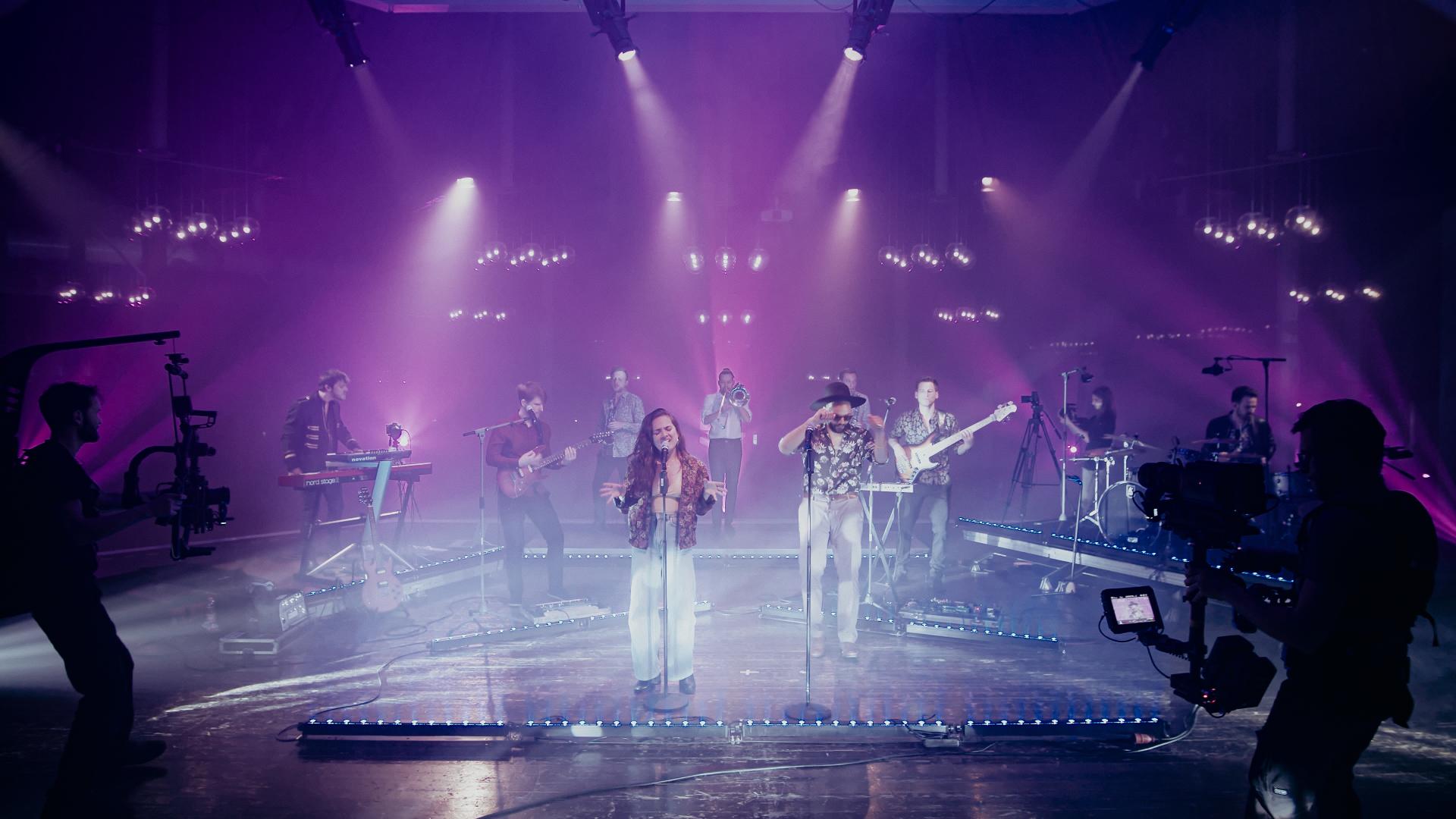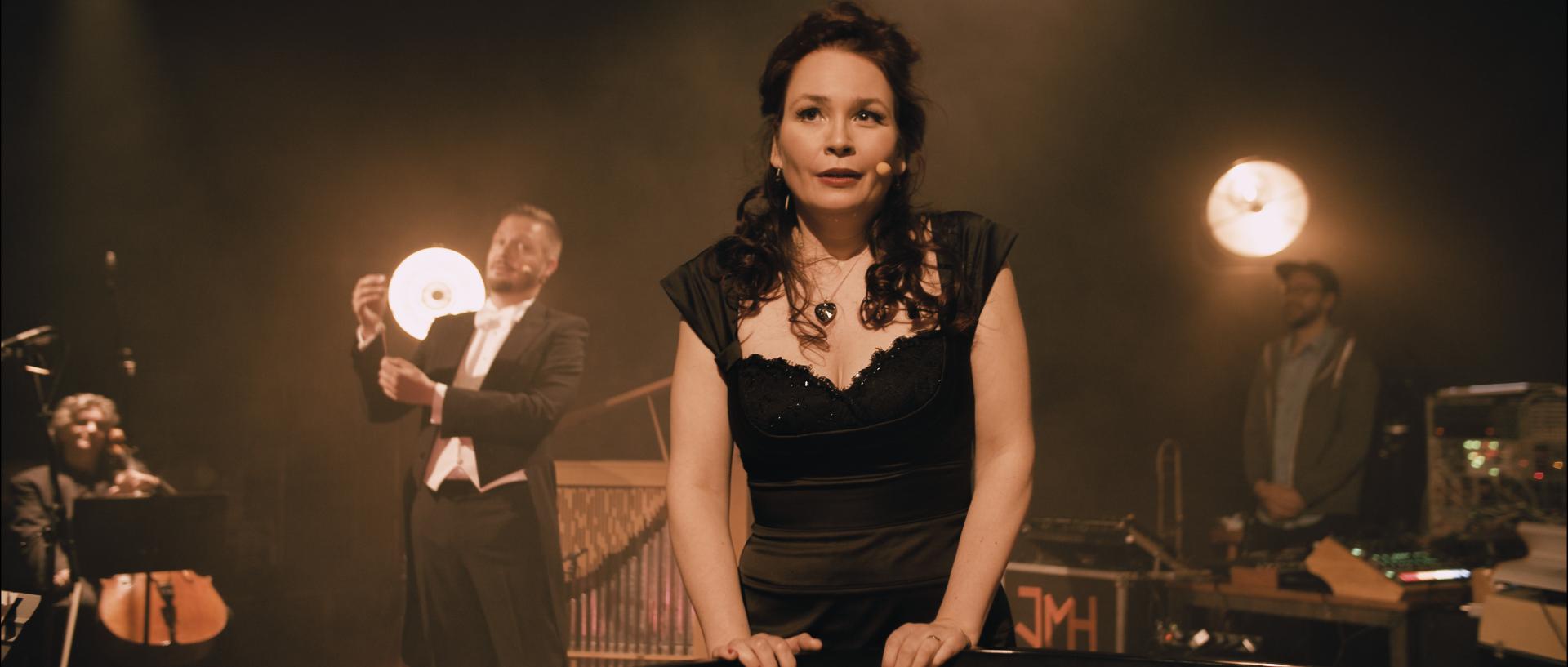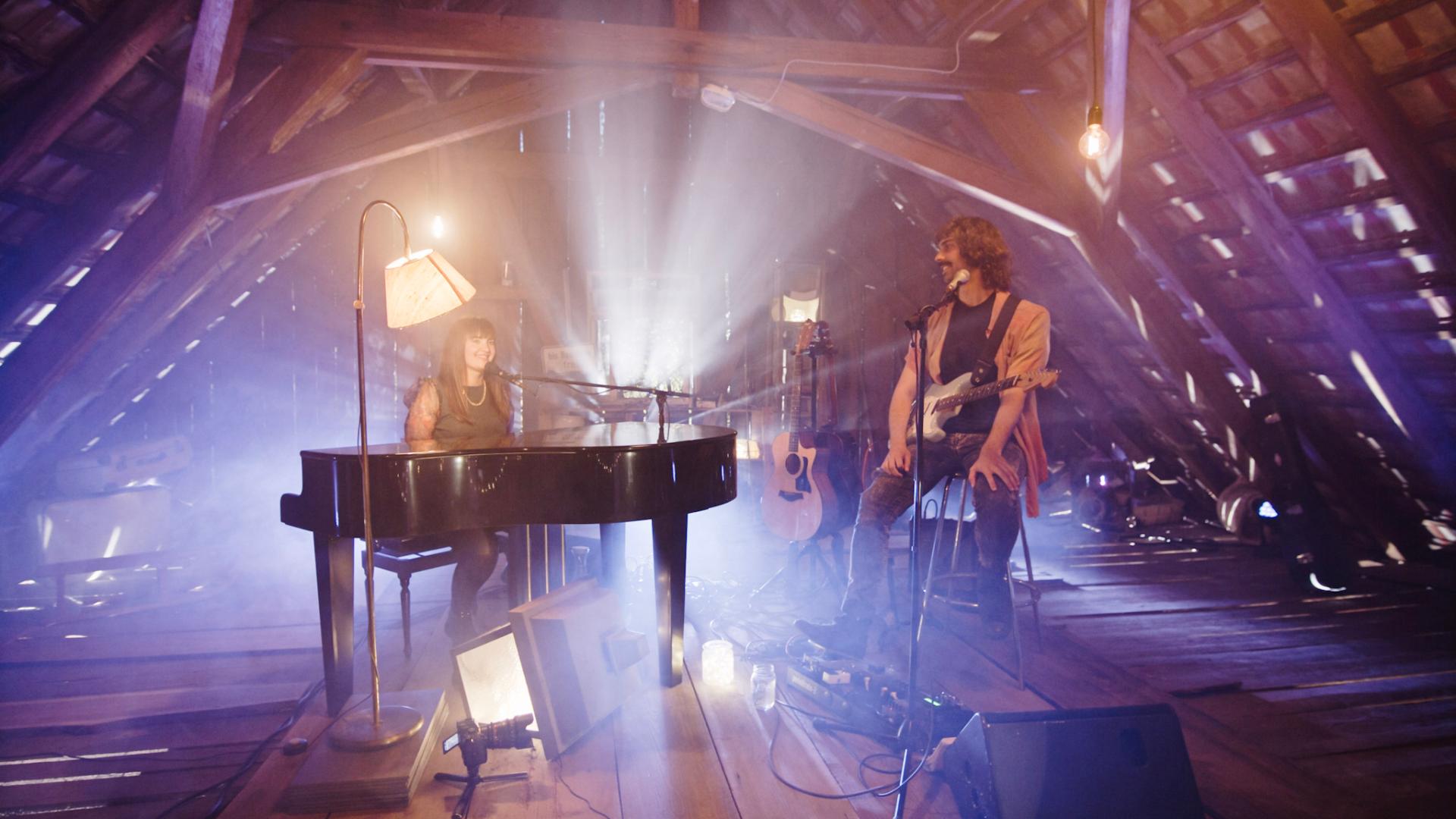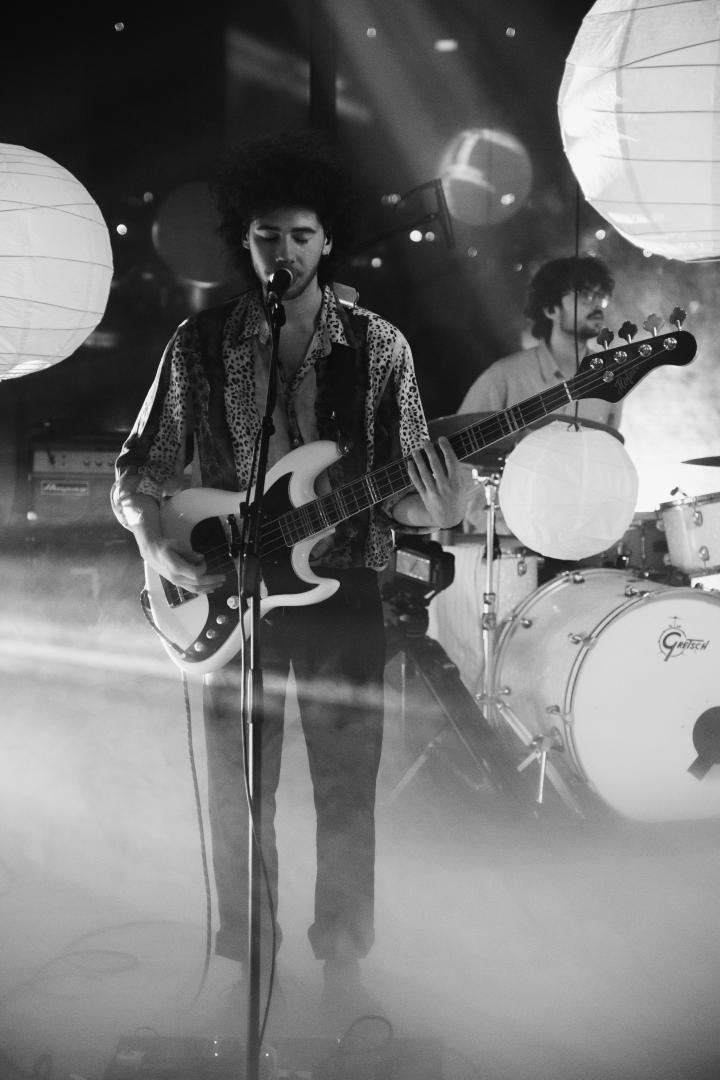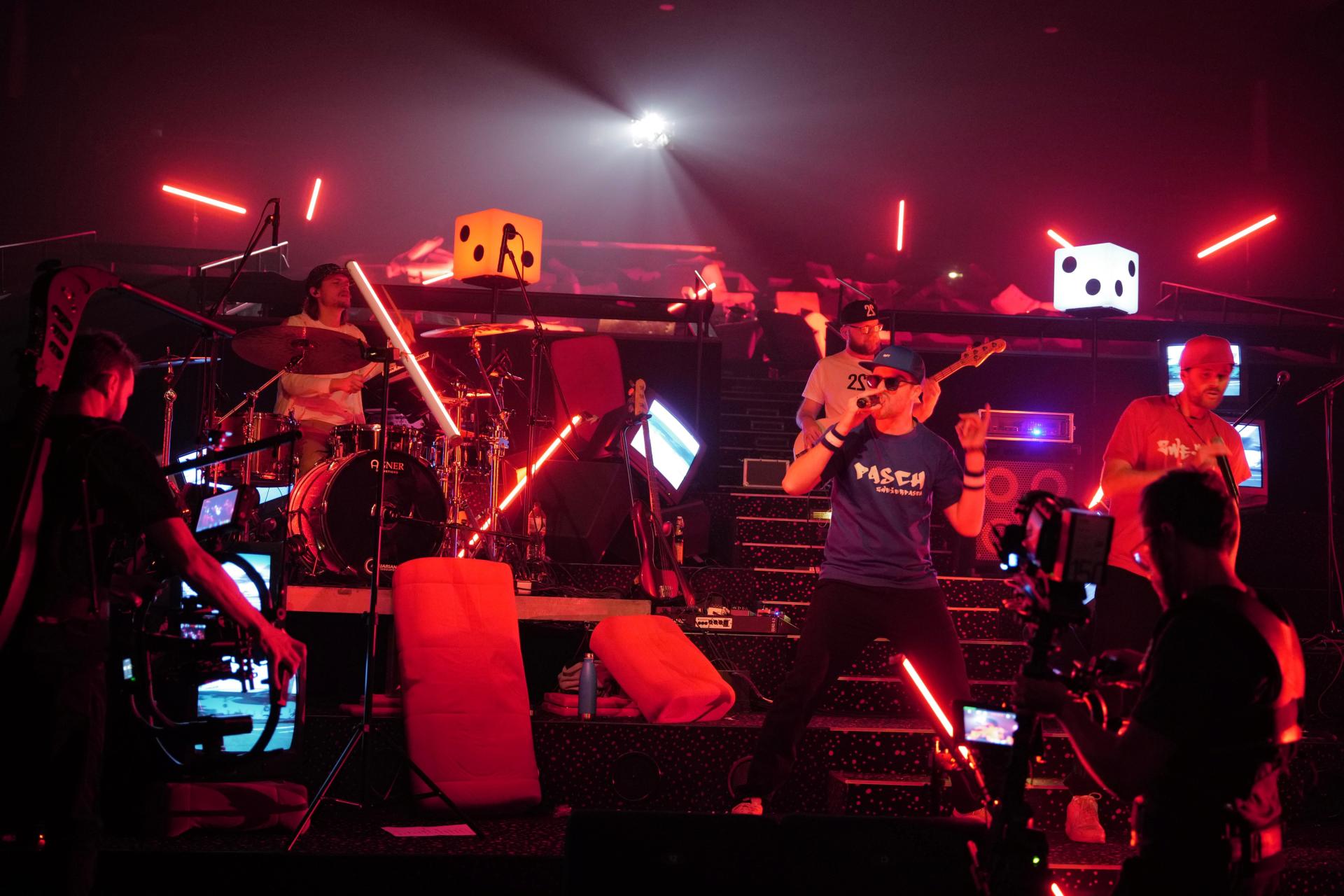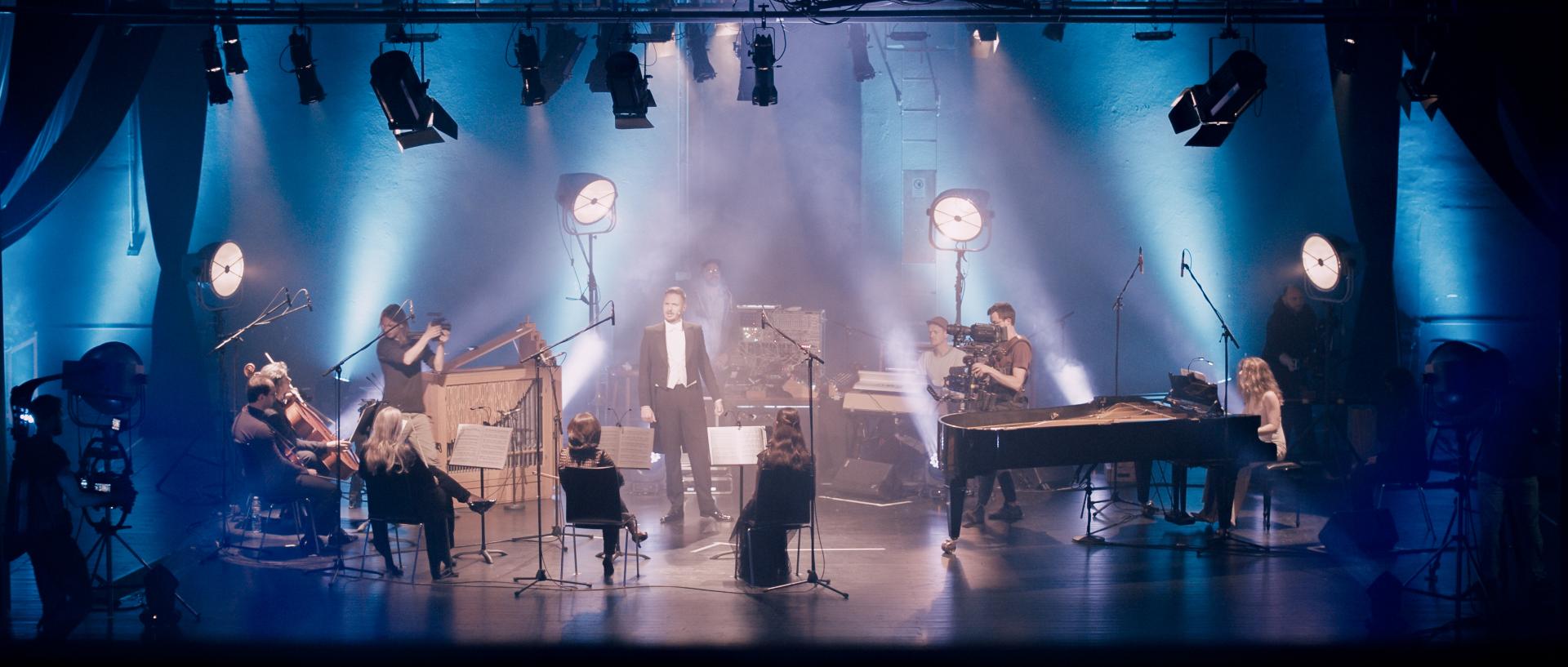WeLive
Basic information
Project Title
Full project title
Category
Project Description
WeLive is a web series with the goal of presenting musicians of different styles and genres, who are little noticed by the mainstream, through elaborate concert films in changing locations. All films are produced with up to 15 cameras, specially planned light show and finally a post-production lasting several weeks each. WeLive is not a livestream format, but a film production. The series is published free of charge as a stream on YouTube to guarantee the artists as large a platform as possible.
Geographical Scope
Project Region
Urban or rural issues
Physical or other transformations
EU Programme or fund
Which funds
Description of the project
Summary
eLive is a web series that was launched at the beginning of the Corona pandemic as a support and promotion for regionally known music talents of different genres. The non-profit association Lahrer Rockwerkstatt, the media production company punchline studio and the Schlachthof Jugend&Kultur Lahr invited musicians from outside the mainstream to perform in various locations in Baden-Württemberg - accompanied by up to 15 cameras, staged by an elaborate light show and recorded with near to studio quality sound. In a post-production of several weeks per film including editing, colorgrading, mixing and mastering, punchline studio then produced concert films at the highest level for artists from Germany, France, Switzerland, Luxembourg, England, Ukraine and many more and made them available on the platform www.welive-festival.com and on YouTube as a free stream. In this way, our team opened up the digital space to the most diverse audience possible without paywall or other access restrictions. The production quality of the films clearly stood out from the cheap live streams that were widely produced at the time, and they became much-watched digital business cards for the musicians. Around one million Internet users have now come into contact with our project on Facebook and YouTube - a number that is all the more remarkable when you consider that most of the musicians portrayed are very unknown. Meanwhile, the team has already been awarded prizes twice - in 2020 with the German Rock&Pop Award for the promotion of music culture in Germany, and in 2021 with the Alternative Media Award in the "Networking" category. For the musicians, the films mean a great advertising space in the digital space. We also attach great importance to selecting and designing the participating locations to match the music. From the modern concert arena to the abandoned cinema building, a wooden shed or a park theater, we set the stage for different spaces in our concert films.
Key objectives for sustainability
As a digital project, our web series has a lasting impact on the cultural sector in Europe. By strengthening the cultural sector and enabling cross-national collaboration among cultural practitioners, we are weaving a network that will last for many years to come. This first became apparent in the analytics of several videos, which revealed that "our viewers" tuned in again to the next release, even though the genres of the music varied completely. For example, several thousand viewers of the concert film with pianist Pervez Mody also watched the film with the post-rock band VON WELT about two weeks later. The attention generated, meanwhile, also benefited the camera personnel involved in the film. Both artists and film crew repeatedly reported an improved order situation due to WeLive. This can be seen as an example of how cross-genre collaboration in the arts industry helps all sides. WeLive is also sustainably well positioned in terms of the circular economy. Since all film shoots take place in private, waste and other expenses are kept within limits. Only the electricity consumption contributes to a negative balance - which we are trying to improve with solar cells on the roof of our studio.
Key objectives for aesthetics and quality
WeLive sees itself as an art project that brings together different art forms. In addition to the obvious - the staging of musicians and their music - art is also reflected in many other meta-levels of WeLive. For example, in the run-up to the productions, people from different art forms work on location scouting, set design, lighting and film direction. Around 20 to 25 artists are at work per film to give each individual WeLive episode its own aesthetic. This is what makes WeLive so unusual. The creative team's goal is to give viewers a perspective on the art presented that they could never experience in a normal concert. This also includes the fact that artists and camera personnel communicate openly with each other during the concert/film. The musicians are not "alone" in the room, as is so often the case in similar productions, but have a direct contact person through the camera lens. This leads to intimate moments between musicians, camera and audience even in the largest location. This ingenious directorial work allows the viewer to perceive the music in a completely new way and at the same time picks him up where he is - at home in the living room, on the way to work or in the home cinema. Just as they like it. As a result, often neglected "small" and unknown artists appear like rock stars and are thus of interest to a broad audience. In addition, the staged locations also shine in a completely new light - which later also leads to greater interest among "offline visitors". This is a win-win-win situation for the creative industry, and the digital success proves that there is definitely an audience for this type of cultural work. That's why this way of working is certainly worth emulating for many other creative artists.
Key objectives for inclusion
Since WeLive is designed as a digital business card for artists and locations, free accessibility to the product was emphasized from the beginning. That's why we also decided against the more lucrative option of a paywall for the films. WeLive should be accessible to a wide audience of different preferences. By publishing the videos and films on our website www.welive-festival.com and putting them online on YouTube and Facebook at the same time, we put them directly into the timelines of many people for free. Opening WeLive to every genre of music from rock to classical, electro to rap, funk, pop or blues meant that our audience could be found in every walk of life, age group or gender. Equally in focus for us was the balance of male and female protagonists from different countries. So far, 80 musicians from 17 different music genres of various origins from Germany to France to Luxembourg, Ukraine, Switzerland and many more have stood in front of our cameras and got to know each other during the shootings. This resulted, for example, in the German-Ukrainian trio "JuKoLika", which was funded in 2022 by the German Music Fund and is made up of musicians who got to know each other through WeLive in 2020. For the initial funding, we also asked for help from citizens. Through crowdfunding, we thus received the first third-party funding for our project. In addition, the citizens of the city of Lahr in Germany voted in a citizens' election in 2021 for municipal funding of a WeLive episode with Lahr artists. So our audience proactively helped make WeLive what it is today. More citizen engagement and participation really doesn't get any better than that.
Results in relation to category
Many musicians and artists found themselves in a hole at the beginning of the Corona pandemic that has barely closed since. With the lack of performance opportunities and the accompanying problem of a lack of marketing and earning opportunities for young or unknown artists, many struggled with their profession and vocation and abandoned their projects. Often with the feeling that they and their art were held in low esteem in society and in politics and that they were "not needed". "After all, we are not relevant to the system" - we often heard this sentence. This situation led to a big problem in the dwindling "underbelly" of the creative scene, which will even only really become apparent in the coming years. Our project WeLive works against this and tries to give a perspective to exactly these artists, who deserve it in their quality to pursue their vocation, but hardly manage it due to lack of opportunities. One of our protagonists told us after the shooting that we had given him the feeling that his work was still appreciated and that it made sense. This statement confirmed us very much in our way to show artists - musicians as well as filmmakers, event technicians and location hosts - a perspective and to bring their work to the public with the greatest possible respect. This contributes to regaining a sense of belonging. WeLive offers artists and their audiences a way to digitally rediscover or even rediscover themselves. Simply put: to belong together.
How Citizens benefit
Right from the start, our viewers had the opportunity to approach us with band or location suggestions. The resulting advantages are obvious: Those who suggest "their" favorite artists have a higher chance of enjoying a concert film with these very artists. The same applies to location suggestions from event organizers or cultural offices themselves as well as from viewers. Particularly important for us was the participation of citizens in the financing process, as described above, both through support via crowdfunding and through citizen involvement in "Lahrer Stadtgulden 2021", when the residents of Lahr voted us a grant for a "Lahr episode" through funds from the city of Lahr in the vote on the so-called citizens' budget. Furthermore, there are always at least seven volunteers working on the sets of WeLive, who on the one hand get the opportunity to get an insight into our work, but on the other hand are also indispensable as workers for the production as such. And of course without people sharing our work and giving feedback to the artists our whole idea would not work at all.
Physical or other transformations
Innovative character
WeLive is currently the only concert film series that presents musicians outside the mainstream with the highest standards. The only comparable production at present is "MTV Unplugged," a web series that also portrays musicians in front of many cameras in changing locations. However, MTV Unplugged is aimed exclusively at pop stars and only focuses on well-known big names in the music industry. WeLive, on the other hand, puts itself at the service of the underbelly and uses its work to support the little guys who could never afford such a production on their own. What is important about WeLive is that the productions are financed directly by the WeLive team itself - through third-party funding, volunteer work and considerable self-financing of my company punchline studio. On the contrary, the musicians, who normally would not be able to pay for such a production, even receive a fee from WeLive. "Our" artists thus benefit from a concert film worth well over 20,000€ and a performance fee. Nevertheless, all professional filmmakers on set also receive an industry-standard fee. This practice is certainly unique in the creative industry.
Learning transferred to other parties
The project results and experiences are transferable to other parties and contexts insofar as the harnessing of digital perspectives is per se open to everyone. The interplay of innovative aesthetics, a sustainable approach, and opening up and inclusion in a large network described above can be taken to heart in almost any creative project. In addition, in the coming years we will in all likelihood see further growth in terms of the distribution of our concert films that have already been released. After all, our art is freely available to everyone on the Internet and is being received more and more with each passing day. The method of bringing together musicians, filmmakers, event technicians and lighting artists can also be applied to other genres of the cultural industry. Basically, WeLive proves that working together, the intended crossover in the cultural sector and the inclusion of different nationalities create a product that in turn appeals to many people. In this way, different sectors together open up to each other's audiences. This principle can be applied many times over in any case.

